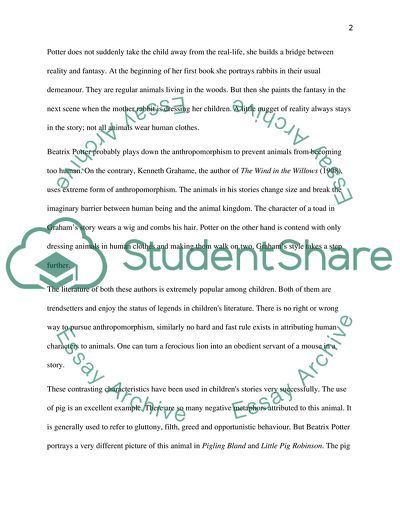Cite this document
(Anthropomorphism in the Work of Beatrix Potter Essay, n.d.)
Anthropomorphism in the Work of Beatrix Potter Essay. https://studentshare.org/literature/1817094-use-an-existing-theory-orientated-essay-on-anthropomorphism-to-analyse-the-work-of-beatrix-potter
Anthropomorphism in the Work of Beatrix Potter Essay. https://studentshare.org/literature/1817094-use-an-existing-theory-orientated-essay-on-anthropomorphism-to-analyse-the-work-of-beatrix-potter
(Anthropomorphism in the Work of Beatrix Potter Essay)
Anthropomorphism in the Work of Beatrix Potter Essay. https://studentshare.org/literature/1817094-use-an-existing-theory-orientated-essay-on-anthropomorphism-to-analyse-the-work-of-beatrix-potter.
Anthropomorphism in the Work of Beatrix Potter Essay. https://studentshare.org/literature/1817094-use-an-existing-theory-orientated-essay-on-anthropomorphism-to-analyse-the-work-of-beatrix-potter.
“Anthropomorphism in the Work of Beatrix Potter Essay”. https://studentshare.org/literature/1817094-use-an-existing-theory-orientated-essay-on-anthropomorphism-to-analyse-the-work-of-beatrix-potter.


